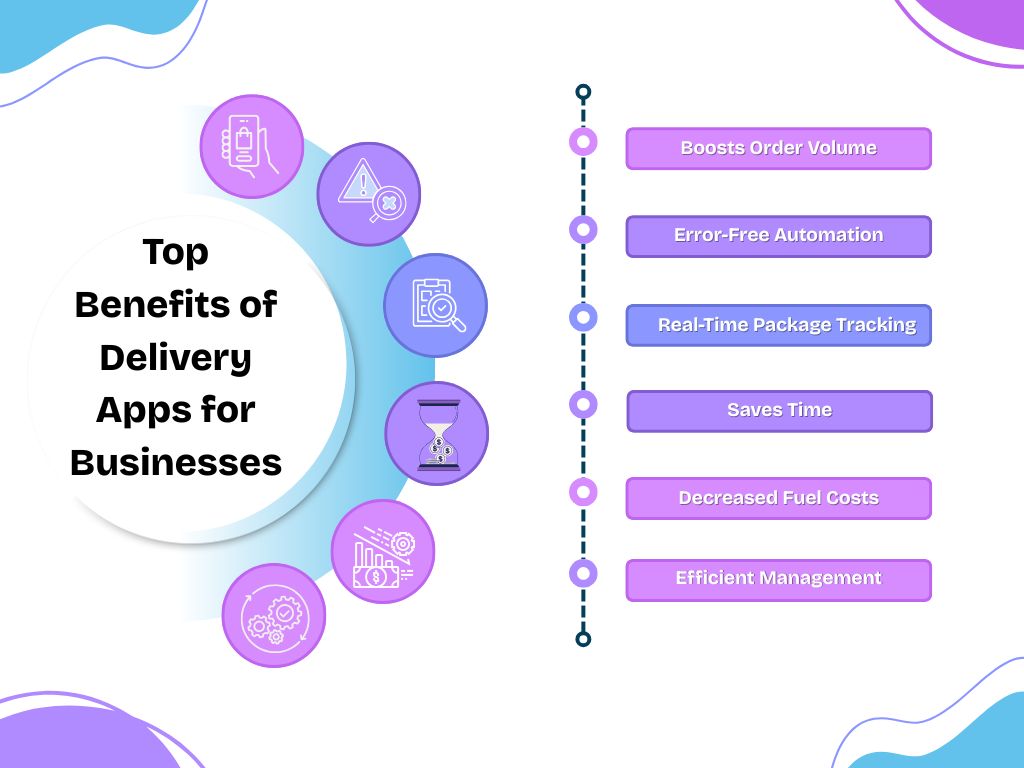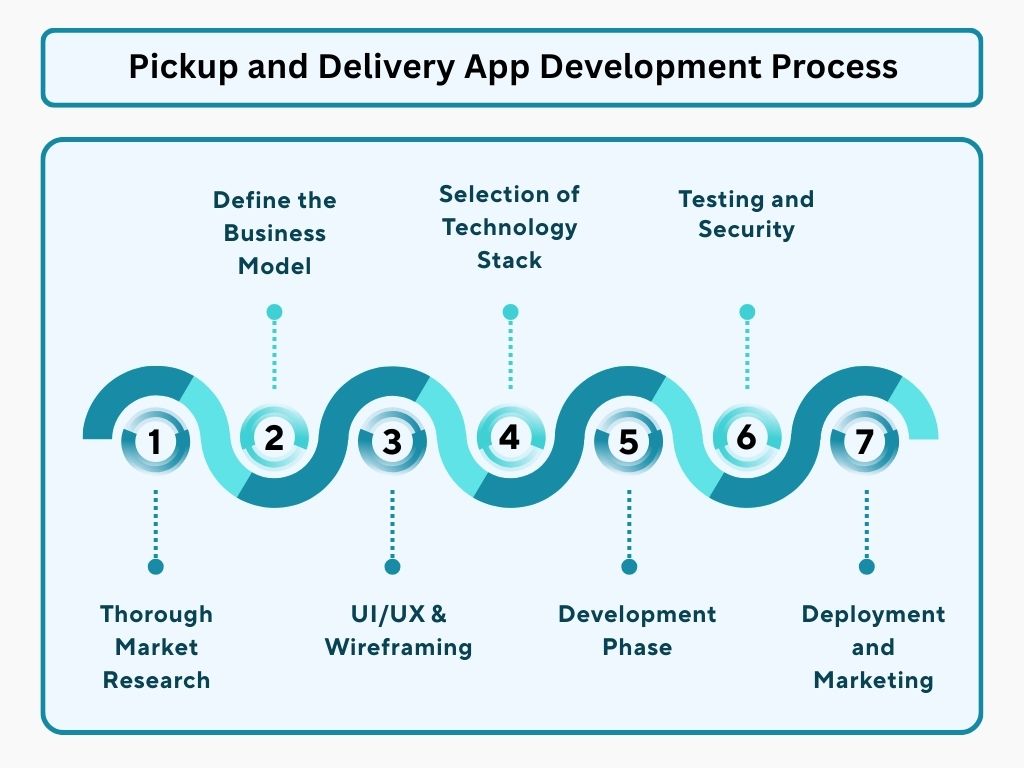The demand for on-demand services continues to grow, and pickup and delivery apps have become essential tools for modern businesses. Whether it’s food, groceries, laundry, parcels, or retail products—these apps offer unmatched convenience for both companies and customers. By using technology to manage pickups and deliveries, businesses can increase efficiency, reduce operational costs, and improve customer satisfaction.
Top Benefits of Delivery Apps for Businesses

1. Boosts Order Volume
When businesses go mobile, customers find it easier to place orders. A pickup and delivery app removes physical limitations, allowing customers to order at any time. This increase in accessibility directly leads to higher order volumes. The app also enables businesses to serve more customers during peak hours without straining physical resources.
2. Error-Free Automation
Manual processes often lead to mistakes—wrong addresses, misplaced items, or missed pickups. A well-built app automates these tasks, reducing the chance of human error. It captures delivery addresses, pickup times, and customer instructions accurately. Automated order management also improves operational flow, making it easier for staff to handle multiple orders simultaneously.
3. Real-Time Package Tracking
Customers want to know where their order is at all times. Real-time tracking gives businesses the ability to provide live updates, which increases customer trust. It also allows managers to monitor deliveries, spot delays, and take corrective actions instantly. This feature is especially valuable for logistics and courier companies handling time-sensitive deliveries.
4. Saves Time
An app simplifies order entry, driver assignment, and route management. Instead of handling these steps manually, staff can focus on core business tasks. The reduced workload leads to faster turnaround times. Customers receive their orders quicker, and the business serves more clients within the same timeframe.
5. Decreased Fuel Costs
Smart delivery apps use route optimization algorithms that assign the most efficient paths for drivers. This reduces unnecessary mileage and fuel consumption. Over time, it results in significant cost savings, especially for businesses that handle multiple deliveries daily.
6. Efficient Management
A pickup and delivery app provides a centralized dashboard where admins can manage orders, monitor driver performance, and track payment statuses. Reports and analytics offer insights that help in making informed business decisions. From inventory control to customer feedback, every aspect becomes easier to manage.
Pickup and Delivery App Development Process
Building a reliable app requires planning and execution. Here’s the development process that helps bring a high-performing pickup and delivery app to life:

Thorough Market Research
Start by identifying your target audience, competitors, and industry trends. Analyze gaps in existing solutions and define what makes your app different. This step helps shape the core features and pricing model.
Define the Business Model
Choose how your app will operate—will you offer services directly, act as a marketplace, or partner with third-party vendors? Decide on your monetization methods, such as delivery fees, subscription plans, or commission-based earnings.
UI/UX & Wireframing
Design an intuitive interface that makes it easy for users to place orders, track deliveries, and communicate with support. Wireframes act as the blueprint for your app, ensuring smooth navigation for both customers and staff.
Selection of Technology Stack
Choose the right tools and frameworks for app development. This includes deciding between native and cross-platform technologies, backend frameworks, databases, and third-party APIs for maps, notifications, and payments.
Development Phase
Start coding the front-end and back-end systems. Developers integrate core functionalities like user registration, real-time tracking, payment processing, and order scheduling. This stage also includes building dashboards for admins and delivery agents.
Testing and Security
Before launch, the app goes through multiple testing phases—unit testing, integration testing, and user testing. Secure payment gateways and user data protection protocols are implemented to ensure safety for all users.
Deployment and Marketing
Once the app passes testing, it’s deployed to app stores. The next step is marketing—use social media, Google Ads, and partnerships to attract users. Collect feedback to roll out timely updates and improve performance.
Must-Have Features of Pickup and Delivery Apps
To make your app effective and user-friendly, include these essential features:
For Customers:
- User Registration and Login
- Schedule Pickup and Delivery
- Order Tracking
- Multiple Payment Options
- In-App Notifications
- Reviews and Ratings
For Admins:
- Dashboard Management
- Order Assignment
- Driver Tracking
- Performance Reports
- Customer Management
- Revenue Reports
For Delivery Agents:
- Profile Management
- Order Notifications
- GPS Navigation
- Proof of Delivery (Signature or Photo)
- Availability Toggle
Each of these features helps improve the overall delivery process, ensuring satisfaction for all parties involved.
Conclusion
A pickup and delivery app brings measurable advantages to businesses of all sizes. From increasing order volumes to saving time and cutting fuel expenses, the benefits go far beyond convenience. With the right features and development process, your business can improve operations, attract more customers, and scale efficiently. Investing in such an app isn’t just a trend—it’s a smart business decision in a competitive market.

